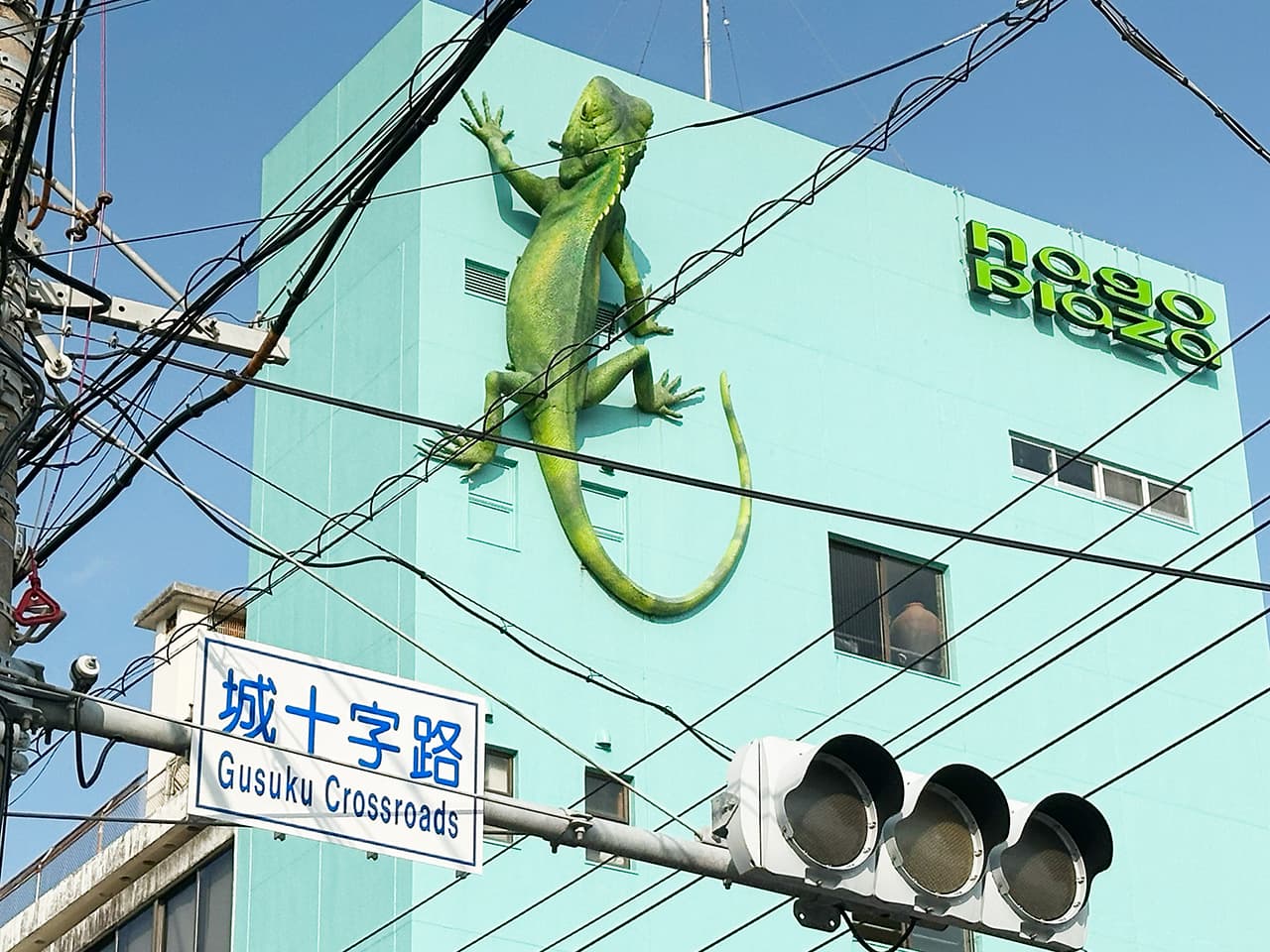Mysterious statues covered with red paper
A pair of bulky, centuries-old statues. Red paper covering. What’s this all about?
After exiting the south side of Tabata Station, I reached the top of a hill where many small roads stretched in all different directions. Every street looked pretty much the same. It can be overwhelming without a map! Luckily, my destination wasn’t far away. I walked down what seemed like the correct road, going past a high stone wall with a dense bamboo grove. I didn’t see any people on the way except an omawari-san (that’s the policeman you often see patrolling around on a bicycle) who passed by leisurely; didn’t seem like he needed to rush anywhere.
Soon I arrived at a big intersection, crossed the road, and just behind some tall office buildings, on my right side, I saw…
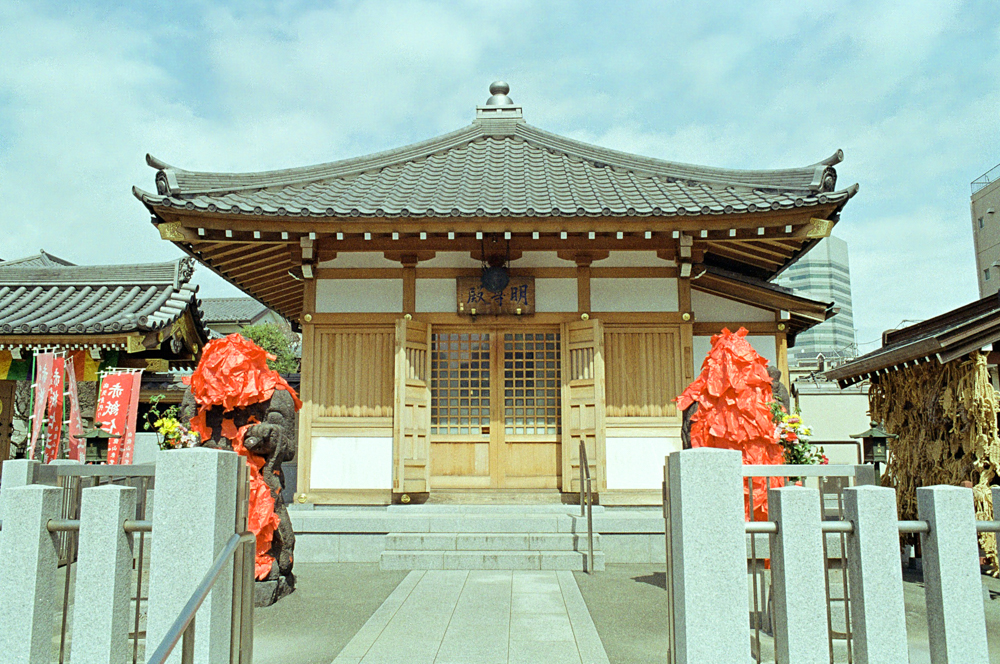
What in the world??
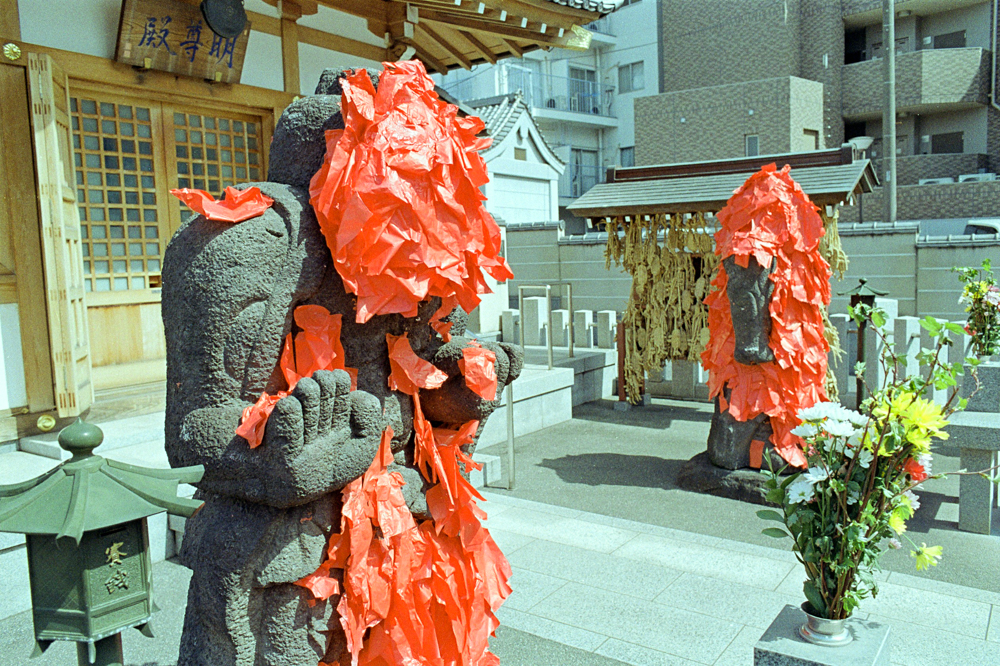
Let’s see this thing up close…
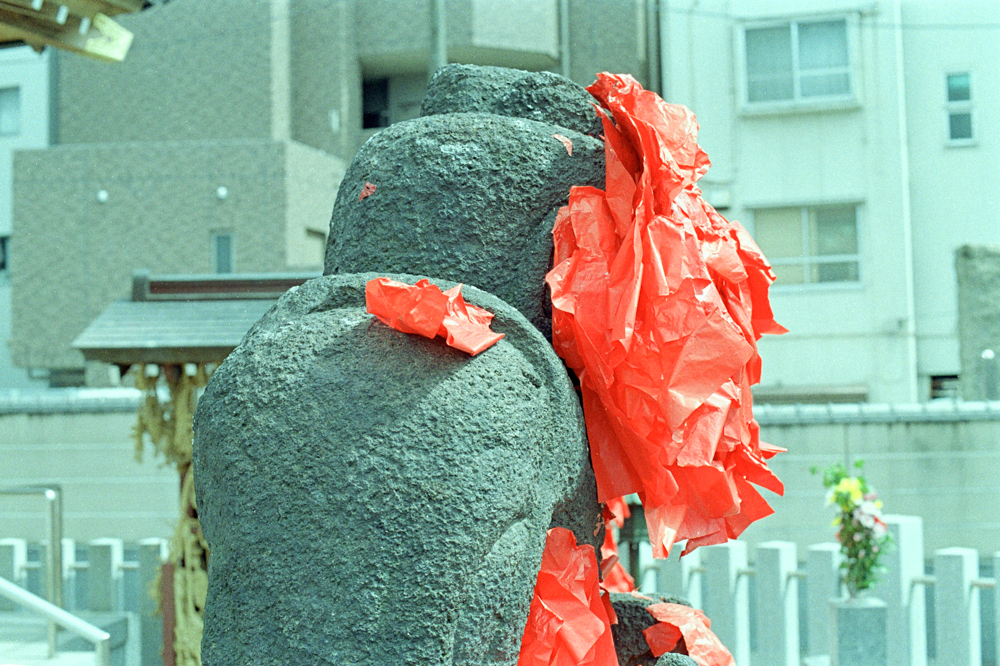
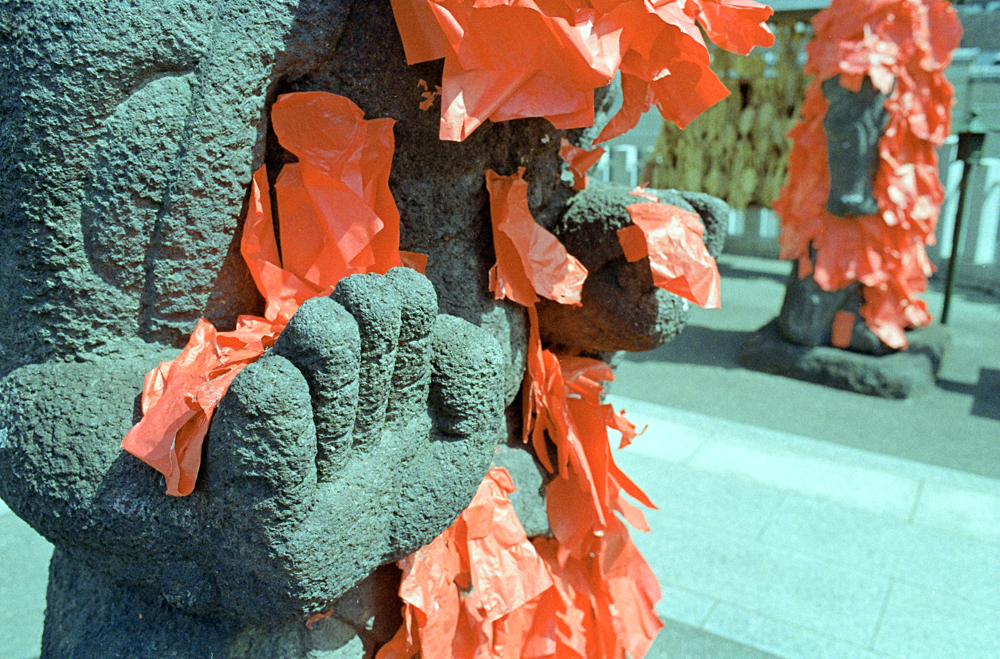
And from the back…
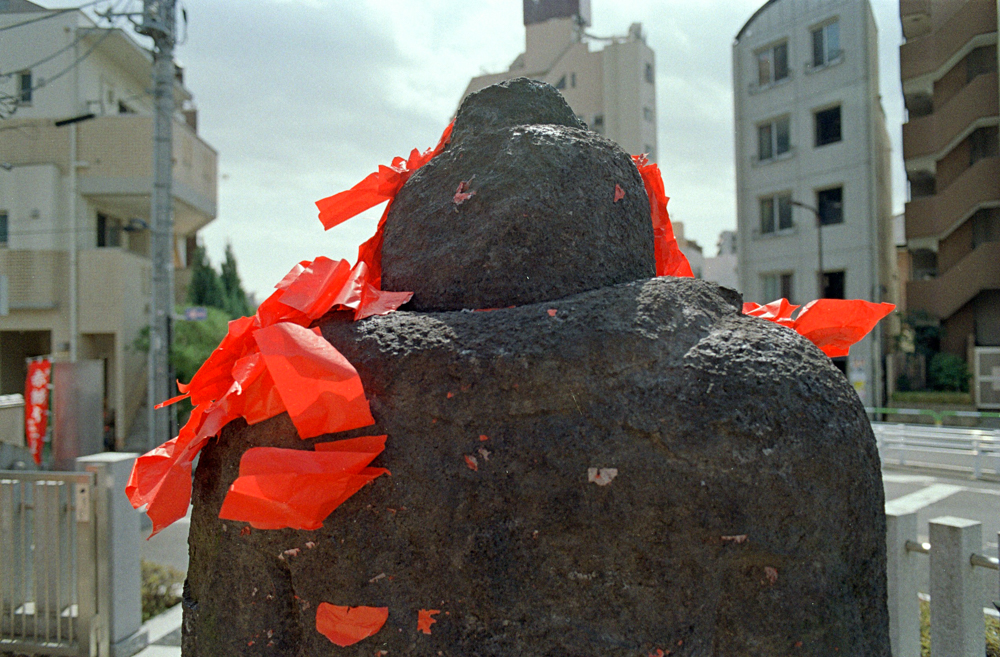
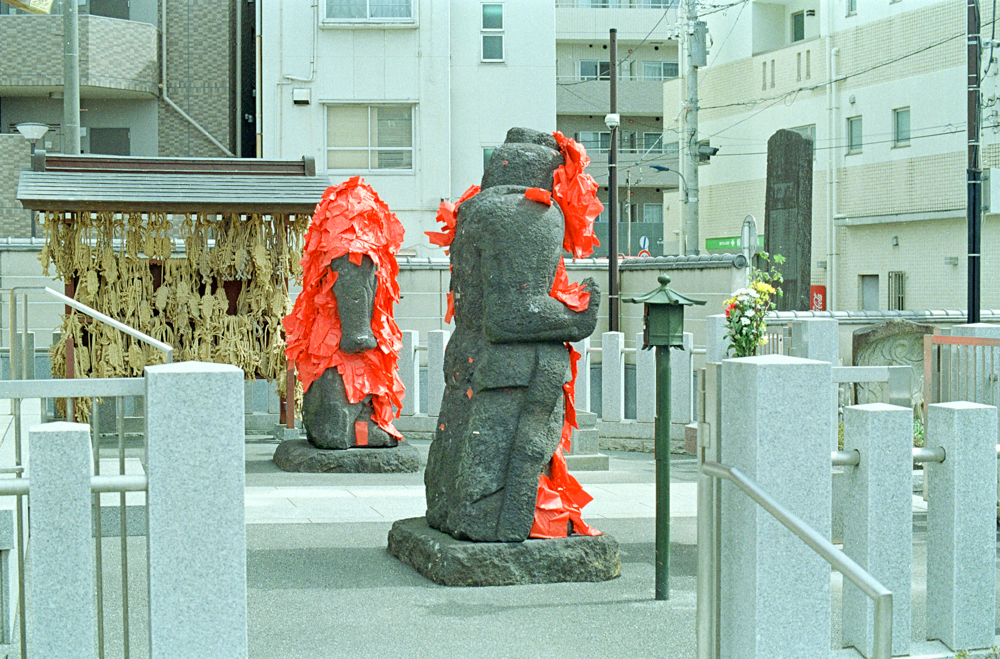
What is this? A new type of a superhero?
Not quite. What you see here are almost 400 year old statues. With red paper coating.
To understand this, we need to start from the beginning. In 1491, a year before Columbus reached the Americas, on the other side of the planet a temple named Togakuji — where these statues are standing — was founded in Kanda. Later, in the early Edo Period around 1600, it was moved to Negishi and then to its final location in Tabata.
According to the inscription on the back of the statues, on August 21st in 1641, the two stone statues were erected by a monk named Sokai to drive away the epidemic that was prevalent in the city of Edo during that time. At first, they stood in front of the adjacent Tabata Hachiman Shrine until the end of the Edo period, but after the separation of Shinto and Buddhism in the Meiji era they were moved to the present location in front of Togakuji Temple. In 2008, they were moved about 7 meters further back to make room for road expansion.
The pair of statues is known as Akagami Nio. Designated as Cultural Property of Kita Ward in 1998, they are some of the oldest Nio statues that still exist in Tokyo (Nio is the common name given to the guardians of the Buddha that are found in front of many Buddhist temples).
Akagami means “red paper”. What’s the story behind it? It is said that this unique local tradition of applying red paper on the statues — red because the color is believed to ward off evil spirits and bad luck — began in the Meiji era. It still continues in the present day. Its purpose is to purify and cure sick parts of the body. How? First, place a bundle of incense in front of each statue, then paste the red paper on the same part that has an ailment. If you are suffering from migraines, paste it on the head to pass the pain on to the Nio. Problems with feet? Paste it on the feet. The red paper (edged with glue) and incense can be bought at the small office on the temple grounds.
There is a collection of straw sandals — called waraji — hanging next to the statues. When your illness is cured, it is customary to buy a pair of waraji from the temple office and hang them in appreciation. It is believed that the Nio will wear those sandals and walk around in them.
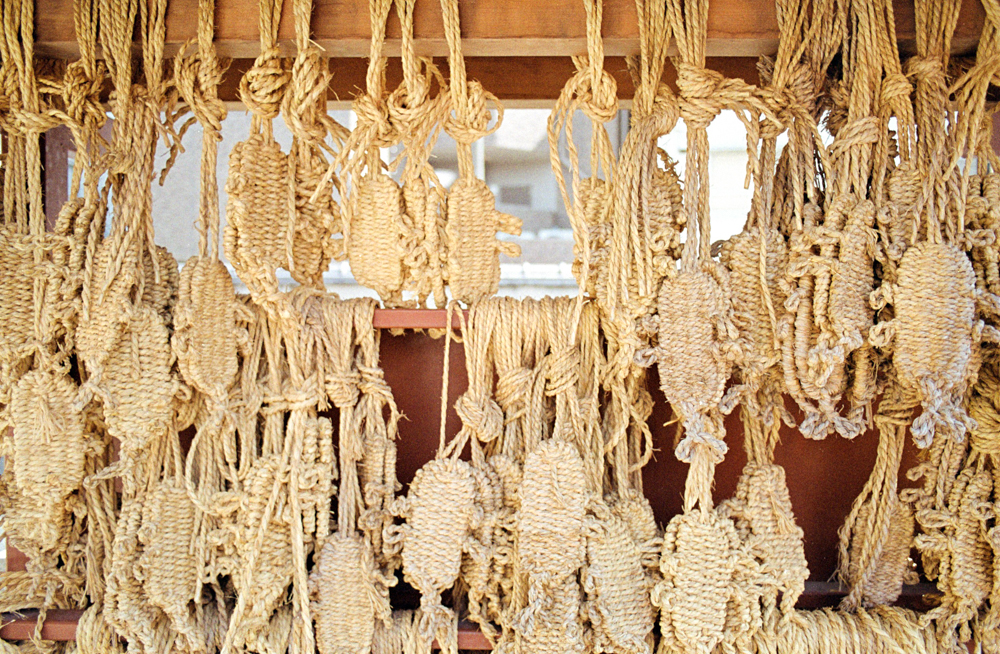
There’s an old Edo depiction of Akagami Nio, shown at the info board in front of the temple. Still the same statues! Imagine how many people must have passed by through the centuries.
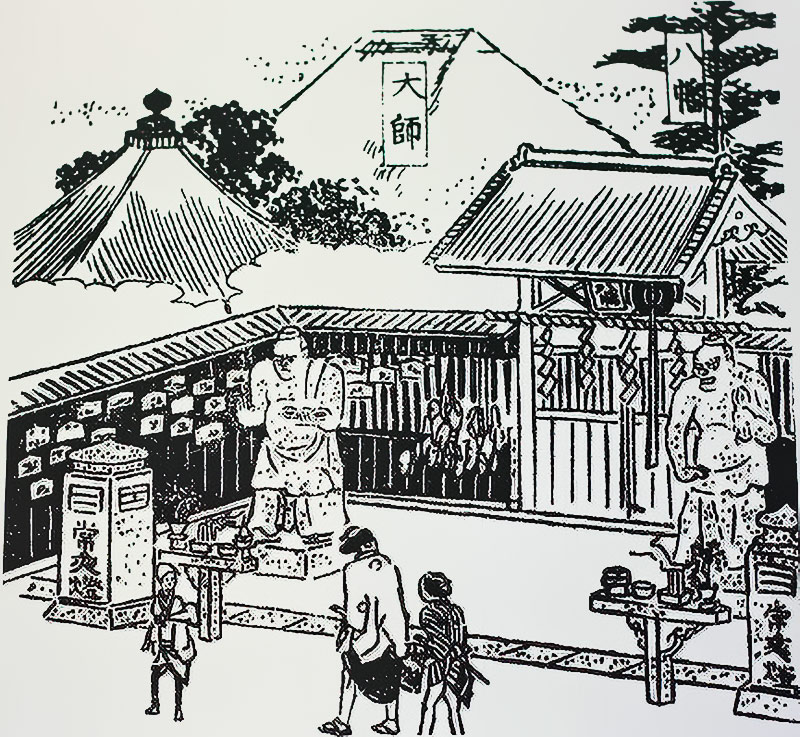
Notice the Nio aren’t covered with any paper and you can see their body and faces, since the tradition didn’t begin yet at that time. Speaking of which, wondering what the faces look like uncovered? That’s actually a very rare sight, but it does happen at times when they clean up everything to make space for new paper. I found a couple of older pictures showing paperless Nio.
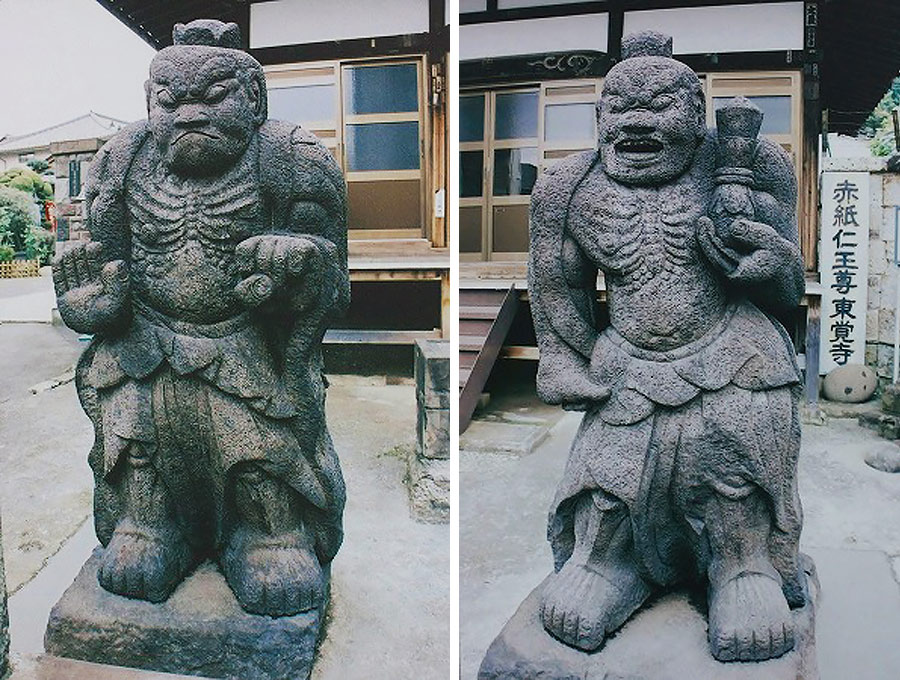
Now that you know the story behind the statues, let’s step inside the temple precincts.
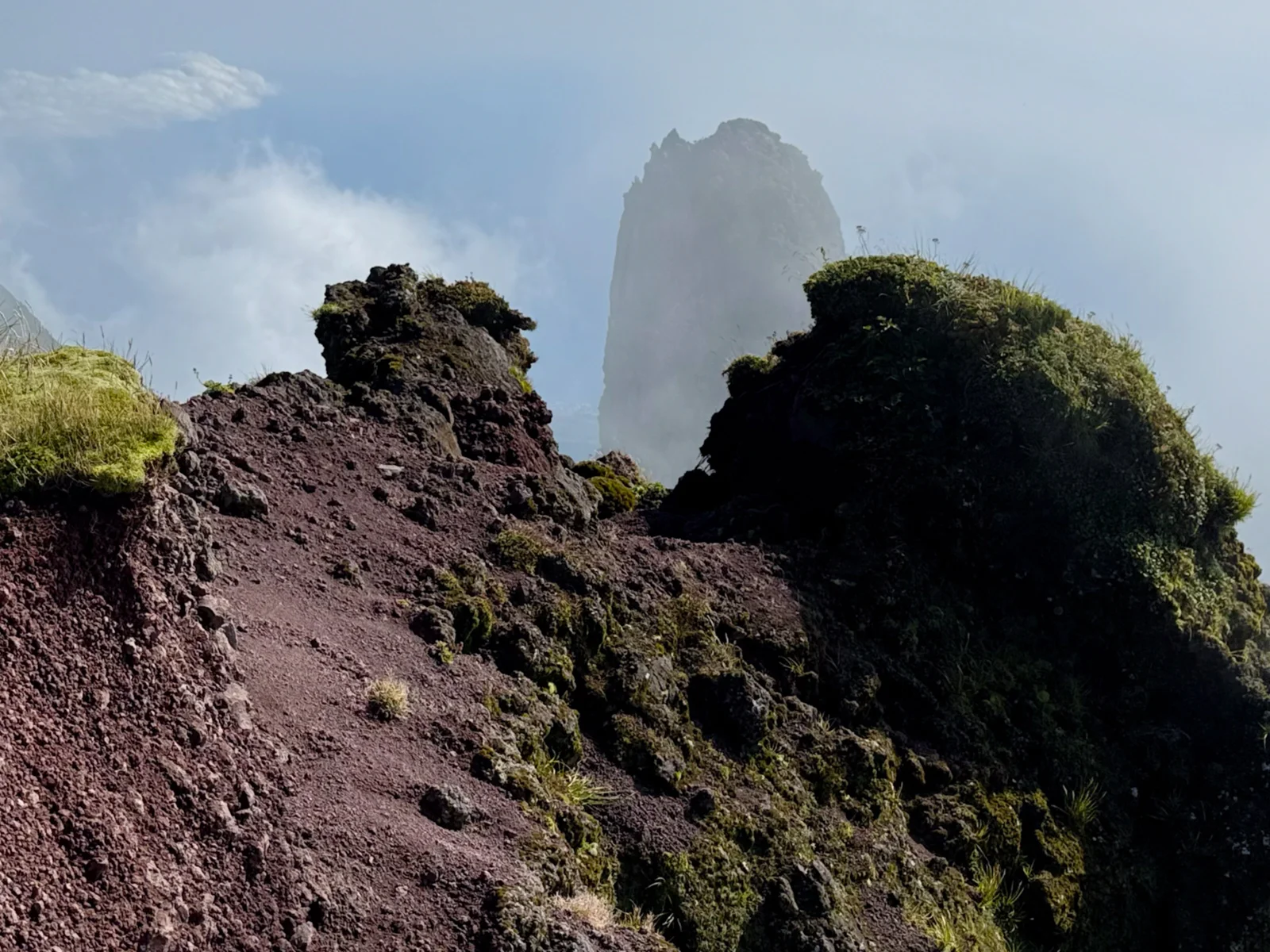
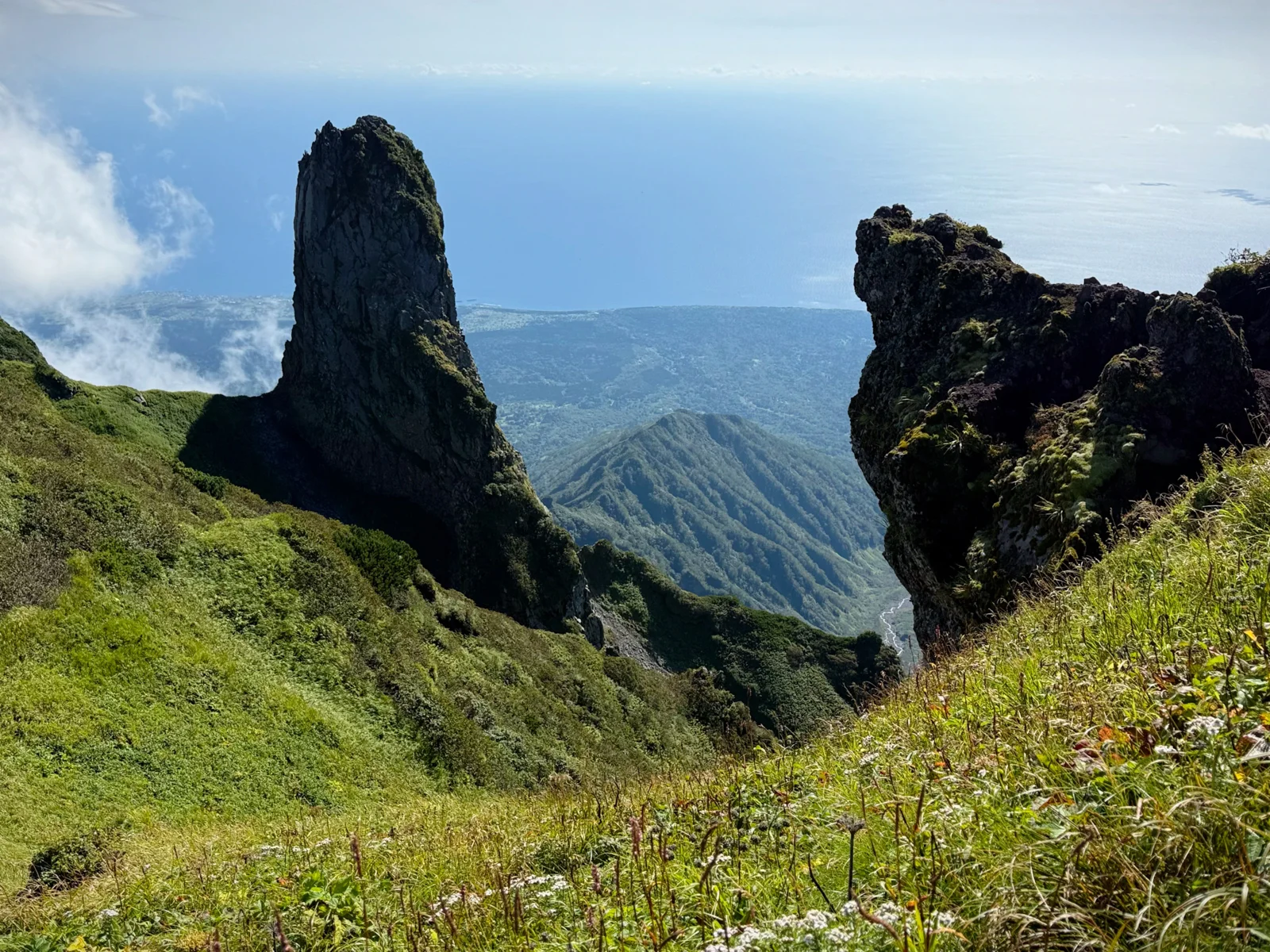
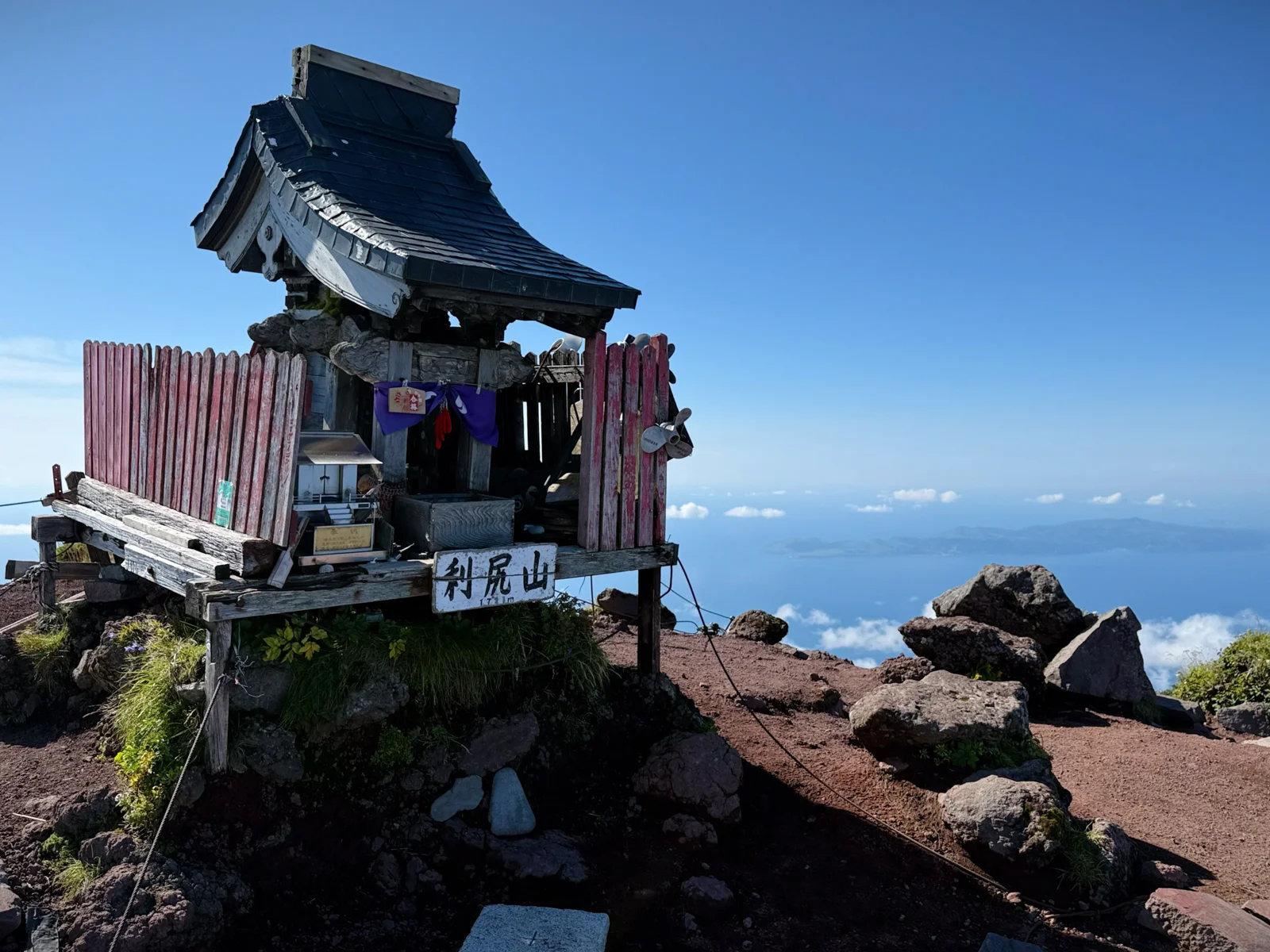

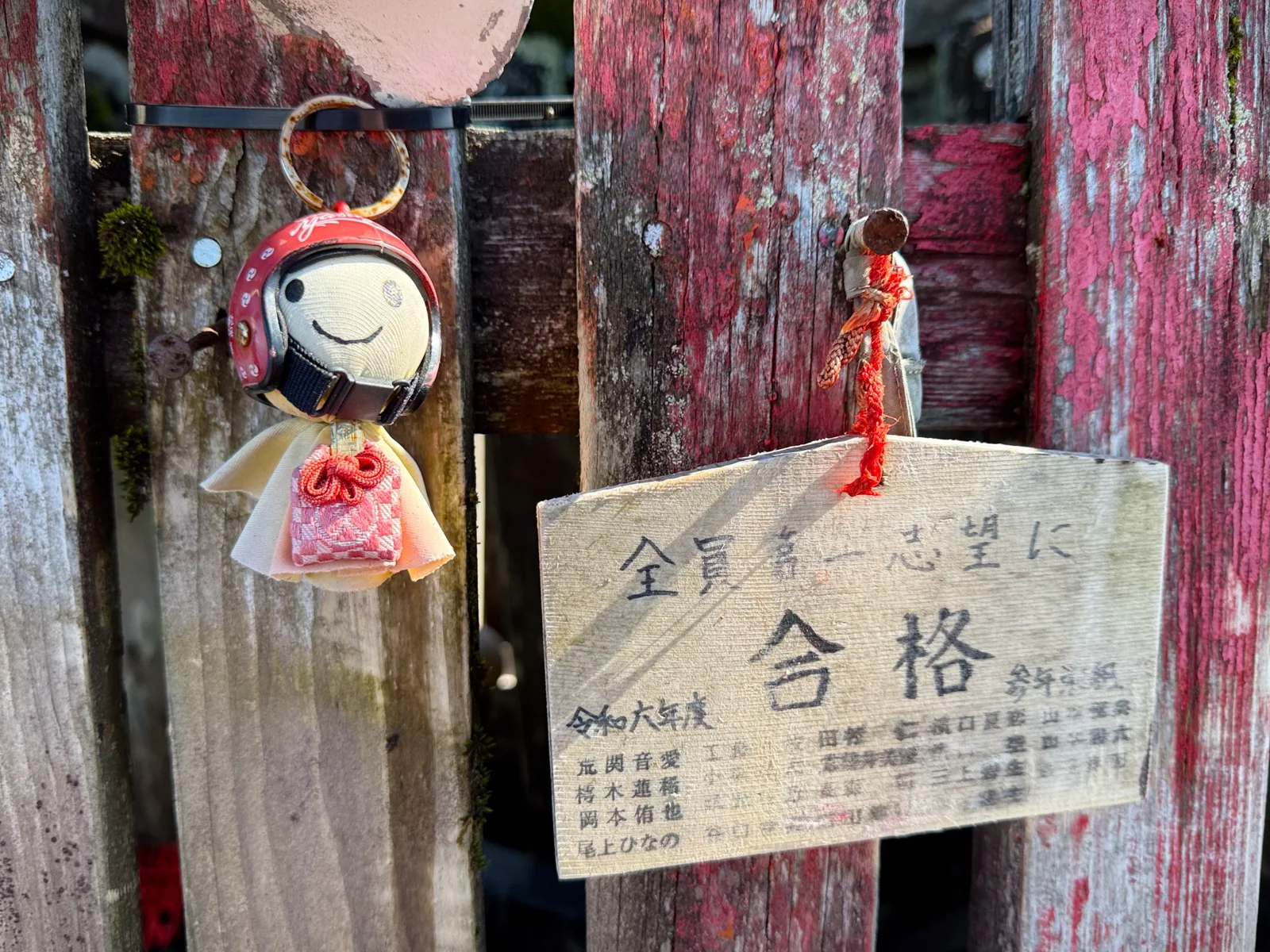



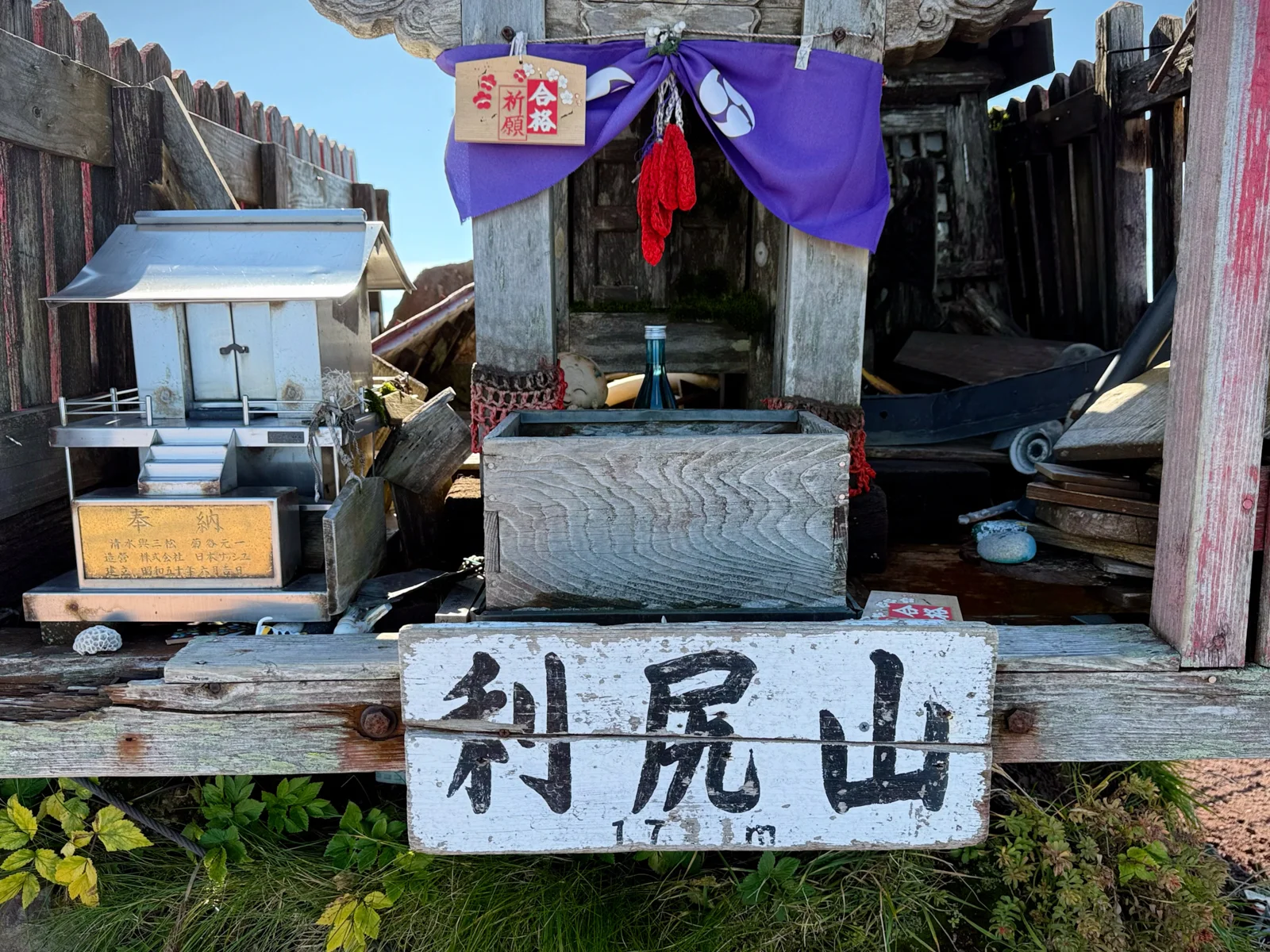
Beautiful, isn’t it? Everywhere you look, you can find various statues. (As always, more photos available in the gallery on this page).
The temple enshrines Fukurokuju — one of the Seven Gods of Fortune in Japanese mythology — who represents wisdom and longevity. The statue of Fukurokuju appears in the main hall every year for 10 days from the 1st to 10th of January.
If you have read this far, you must be feeling very historic by now. So here’s a little bonus — I found an old illustration from Edo Meisho Zue (illustrated guide showing famous places in Edo) that shows the Tabata area, and added markings and photos of what the locations look like today. I found it interesting to look around this place knowing that things looked very similar hundreds of years ago.
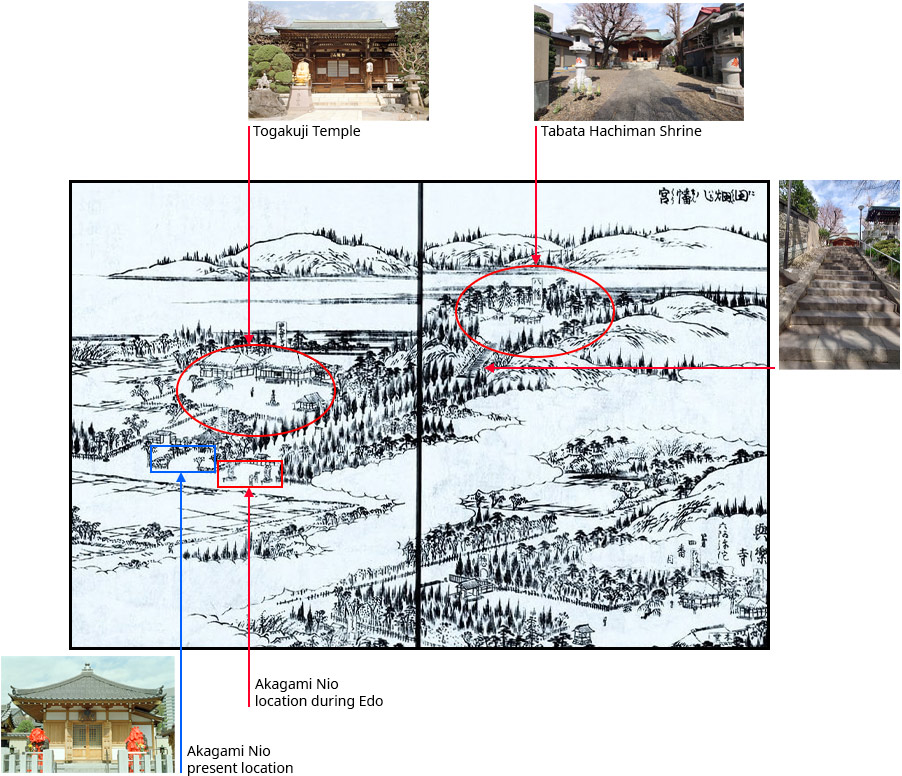
Whoever made this illustration, could they ever imagine it would one day be analyzed and featured in Postcards from Japan?
